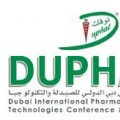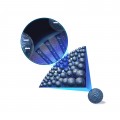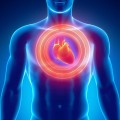How biopharmaceutical drug substances use the nose as a pathway to the brainBehind the doorman’s back - von Johannes Flamm, Stefan Carle, Martina Stützle, Prof. Dr. Katharina Schindowski Zimmermann
According to WHO estimates, over 1 billion people worldwide suffer from disorders of the central nervous system (CNS). Some of the most familiar are Alzheimer’s, Parkinson’s and multiple sclerosis. Although they have long been the focus of research, effective pharmacotherapies are still unavailable for many of these diseases. What is it about CNS disorders that makes it especially difficult to develop drug products that target pathophysiological...
 Isothermal amplification in food analysis – a real alternative to conventional PCRTrust, but verify - von Dr Kurt Brunner, Celine Zahradnik
Inherited genetic material – deoxyribonucleic acid or DNA for short – is unique to every living thing and can therefore be utilised like a fingerprint for identification purposes. DNA analysis has thus become an indispensable tool within food safety, and in the real-time testing of both raw materials and finished products. The established method for confirmation of specified target DNA in a sample is the polymerase chain reaction (PCR).
 Complex API deliveryCellular transport proteins and API transport - von Prof. Gert Fricker, Dr. Anne Mahringer
A medicine's potency often depends on the concentration of its active ingredient (API) at the target site. Medicines are usually delivered remotely to this target site, however. The API must first dissolve and traverse local barriers such as the intestinal wall before it can enter the bloodstream and then reach its target site. For a long time, work in this area was guided by the dogma that API diffusion was the force driving absorption by the body...
 DUPHAT 2014The largest Pharmacy event in Middle East
Dubai International Pharmaceuticals & Technologies Conference & Exhibition once again claimed its rightful place as the premier international conference and exhibition of the Pharmaceutical Industry in the Middle East. The event offered opportunity to discover the latest innovations and ideas from over 420 international manufactures from more than 73 countries. It also provided indepth coverage of key issues facing the industry through interactive...
 Near-infrared spectroscopy in pharmaceutical analysisGood vibrations - von Dr Alfred Steinbach, Staphanie KappesPharmaceutical counterion determinationHouse lights down, stage lights up - von Dr Frank Steiner, Dr Carsten Paul, Dr Mark Tracy
In contemporary practice, roughly half of all active pharmaceutical ingredients (APIs) are administered as salts. The use of the protonated or deprotonated form of the drug substance combined with the selection of counterions enables the targeted variation of key parameters, such as solubility and stability. Analysis of the corresponding counterions constitutes an essential part of the development process for new pharmaceuticals and is now an...
 Re-creating cardiac tissueA Heart in a Petri Dish - von Prof. Dr Marko D. Mihovilovic
For medical research in the 21st century, regenerative medicine offers one of the most promising futures and prospects for further development. Revolutionary results have already been achieved by the efforts of genetic engineering, although ethical and regulatory aspects mean that such methods are unlikely to see widespread deployment.
A complementary approach is now being pursued by the application of small-molecule compounds: a rapidly growing...  Data Visualization in Medicinal ChemistryHiking Trails in Activity Landscapes - von Prof. Dr Jürgen Bajorath
The massive growth of compound activity data provides opportunities and challenges for medicinal chemistry. Conventional approaches for the analysis of structure-activity relationships (SARs) are not suitable for the exploration and exploitation of this unprecedented knowledge base. Recently, new computational methodologies have been introduced for large-scale SAR analysis that put emphasis on visualization to provide an intuitive access to complex...
 Chemical synthesis of vaccinesAn anti-cancer jab? - von Prof. Dr Horst Kunz, Sebastian Hartmann, Björn Palitzsch |
|












